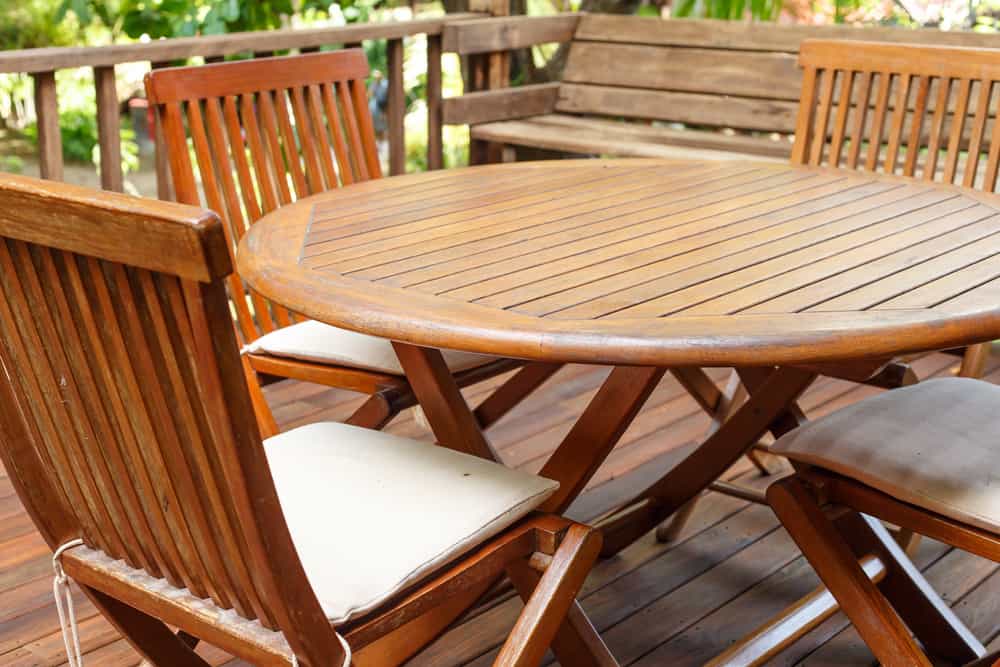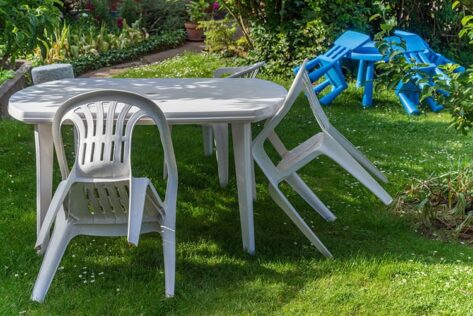Over the past year, our gardens and outdoor spaces have become more important than ever. An extension of our indoor living space, dining al-fresco or relaxing with a coffee and a book in a comfy garden chair is the ultimate luxury.
But why is garden furniture so expensive?

Credit: Shutterstock
Rise in demand
Gone are the days of a cheap, plastic table and chairs set with matching parasol satisfying the style-conscious customer. The rise of social media and the COVID crisis has impacted people’s lifestyles and aspirations. Time spent at home has increased and with it, the desire to create beautiful, practical and permanent outdoor living areas has risen.
The demand for quality garden furniture that looks incredible and lasts for years has risen like never before, driving up the cost. Popular items like egg chairs have been selling out online in just 18 minutes, frustrating if you’ve been waiting for months to get your hands on one.
Increased shipping costs
Because of a Brexit-induced rise in shipping costs, furniture arriving from Europe can cost as much as 15-20% more to bring over. Supply issues between China and the UK and a shortage of shipping containers have also driven prices up.
According to Which?: ‘a shortage of shipping containers has sent the price of a container skyrocketing from around £870-1,100 to £5,100-12,300.’ Predictably, this is having a knock-on effect on the price of garden furniture for consumers.

Photo by Cameron Venti on Unsplash
Quality Materials
It may seem strange to pay the same for an outdoor sofa as you would for a luxurious living room lounger. However, the demands on outdoor furniture are far greater. We expect it to be able to withstand our hugely variable climate, not to fade in the sun and to be strong enough to take the knocks of daily life, albeit for fewer days of the year.
The most robust garden furniture is built from a variety of good-quality materials, all of which come at a cost:
Wood
The best woods for garden furniture are hardwoods like teak, European oak and red cedar. Hardwoods grow slowly and are usually deciduous, meaning they lose their leaves in winter. Wood from these trees is usually denser than its softwood counterparts, making it tougher and ideally suited for outdoor furniture.
Teak contains natural oils that give it superior weather resistance, as well as pest and rot resistance. Grown in tropical regions, like Indonesia and Burma, real teak is rare and hard to grow and is in relatively low supply versus high demand, leading to steep costs.

Teak is in high demand, leading to high prices. Credit: Shutterstock
Rattan
Natural wicker or rattan furniture, popularised by the Victorians and seeing a ‘20s revival, is made from woven reed, willow and rattan. Beautiful to look at, but pretty impractical for life outdoors, synthetic rattan has become one of the most popular materials for garden furniture. Gracing everything from sofas, tables, egg chairs, even garden lights, this material looks almost as good as the real thing.
Often made from recycled plastics, synthetic rattan is water-resistant, won’t rot, is super easy to clean and UV resistant. It’ll also cope with chlorine and salt and is virtually maintenance-free, the superstar material of lasting garden furniture.

Synthetic rattan egg chairs are good for you and the planet. Credit: Bramblecrest
Metal
Aluminium is lightweight, very resistant to erosion and when powder-coated, weather-proof. Forming the base of synthetic rattan garden furniture, aluminium is also used for tables and chairs, loungers and day-beds. It also pairs beautifully with wood.
Although aluminium is abundant, the methods used to extract it require vast amounts of electricity. Aluminium oxide melts at around 2000°C, a hot and costly process.
Steel and iron are other popular metals used in garden furniture. Steel, in particular, is used for furniture legs and if stainless, won’t rust. Wrought iron is synonymous with bistro sets and garden gates, weatherproof when painted or powder-coated, it’s also extremely heavy so is used less frequently than steel and aluminium.

Aluminium dining set from Hayes Garden World
Recycled Plastic
Lightweight and strong, UV and rot resistant, crack-proof and practically maintenance-free, recycled plastic furniture is a savvy option for eco-friendly consumers. Lasting up to 4 times as long as wood, recycled plastic is fast becoming one of the most popular choices for garden furniture. Products are made from recycled HDPE plastics that would otherwise be destined for landfill (and ultimately our oceans) like milk bottles and bottle lids.

Wood-like plastic is getting more and more popular. Credit: Maisons du Monde
HDPE plastic (High-Density Polyethylene) can take centuries to decompose so recycling it is essential. It’s actually more cost-effective to recycle HDPE than to make ‘new’ plastic. POLYWOOD recycle an average of 400,000 ocean-bound and landfill-bound plastic containers per day and transform them into the lumber used to make furniture. The ongoing demand for recycled plastic products is responsible for keeping prices high.
With no dip in the rising trend for exterior design, the demand for superior quality garden furniture, and millions spending more time at home, the cost of garden furniture is unlikely to drop anytime soon.
Read more: The best buy now pay later garden furniture.

Save this pin for later






